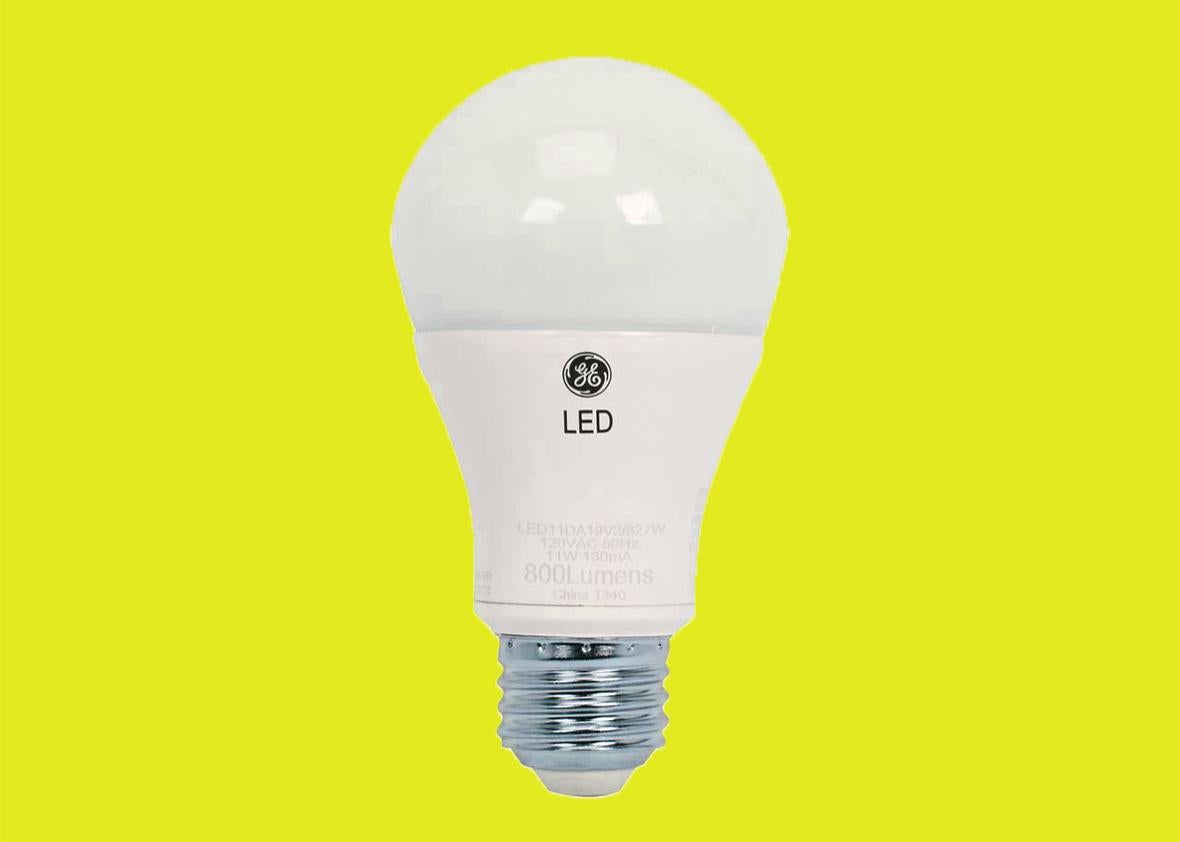How many bankers does it take to change 1.4 million light bulbs?
One, actually.
Last month, JPMorgan Chase announced a deal with Current, a newly formed unit of General Electric, under which Current will plan, manage, and help finance the installation of 1.4 million superefficient light-emitting diodes at some 5,000 of the bank’s branches over the next two years. “It’s the largest rollout for an LED retrofit,” Jaime Irick, the chief commercial officer of Current, told me. The deal could help cut the branches’ lighting-related energy costs in half.
The transaction encapsulates just how rapidly the value proposition surrounding energy-efficiency lighting has changed in recent years. For decades, it was quite difficult to displace the energy-wasting, cheap, disposable, old-fashioned bulbs invented by General Electric’s founder, Thomas Edison. The alternatives—fluorescents, compact fluorescents, and light-emitting diodes, or LEDs—either provided an inferior lighting experience or were insanely expensive (and often both). A few years ago, LEDs finally managed to replicate the lighting aura of incandescent bulbs. But because they were so expensive (up to $15 apiece), the long payback periods made them unviable at scale. It’s difficult to justify a capital investment that won’t pay off for 10 years.
Today, the worm has turned. With production levels increasing, the per-unit cost of LEDs has fallen sharply. (You can get a decent GE LED for about $6 at retail.) Higher efficiency standards have pushed incandescents out of the mix to a large degree. And most significantly, companies like GE have developed new business models that enable large clients to get access to money- and energy-saving LEDs without laying out a ton of cash up front. That has turned LEDs from an experimental, above-market curiosity into a no-brainer.
It’s not surprising that GE has been a pioneer in this area. Last fall, it created Current to work with very large companies on large-scale power and energy issues. Instead of just selling physical goods like turbines, batteries, and light bulbs, GE wants to provide the software, analytics, and management that can help new innovations function at a high level. It’s part and parcel of GE’s broader effort to shed its New York–based broadcasting and financial units and to reinvent itself as a Boston-based digital startup. “We’ve been transforming separately the power and lighting sectors,” Irick said. “And we can do both at the same time.”
Current got started with seven launch customers, including Walgreens, Hilton, and JPMorgan Chase. And it aims to do more sophisticated work than simply replacing light bulbs—i.e. deploying sensors, software, and the cloud to link up energy production, storage, and use at large enterprises. But Jamie Dimon’s light bulbs were a good place to start and make an excellent demonstration project.
The economics of operating LEDs may be obvious. They use up to 80 percent less power than incandescents to produce the same amount of light. Irick argues now that for homeowners, the payback of the upfront investment to switch to LEDS—a house with 40 bulbs, paying $200 for new bulbs—will save $280 per year. “The simple payback is less than 10 months,” he said. For companies, which buy in bulk, the payback period can be shorter.
In theory, companies should be able to manage their own light bulb replacement. But Irick notes there are three barriers to the adoption of LEDs. The first is general education and awareness of how they work and what the savings can be. Companies get that relatively quickly. And GE can make very specific promises on the amount of energy to be used in lighting, given the number of hours the bulbs are on.
The second barrier—“the capital barrier,” as Irick call it—is more difficult to surmount. The economics of buying and installing them can be a challenge to corporate bureaucrats. Companies often produce multiyear budgets well in advance. Going LED means spending a lot of money in a single year to buy and install them, make sure they work, and dispose of the old ones. And it is difficult even for a company like Chase to make a decision quickly to write a check to buy 1.4 million new light bulbs and pay for their installation. GE, of course, has a long track record of helping to finance customers’ purchases of its capital goods, structuring payments over a period of years rather than upfront.
The third barrier is execution. Aside from selling the lights, GE manages the process of installation and disposal across a very large physical footprint. All JPMorgan Chase has to do is write some checks and watch the savings mount.
As innovations go, a deal to change lots and lots of light bulbs may not sound like much. But the very banality of this energy-efficiency effort is what makes it so important. Customers and employees won’t notice much of a difference in the lighting. It won’t require much of an upfront investment. It’s not about burnishing brands, or greenwashing, or overpaying for renewable sources of energy, or making a fruitless gesture. It’s a purely commercial transaction—a business that counts its pennies carefully is acquiring a needed service, lighting, just as it would telecommunications or data storage. And companies will always respond to offerings that can provide the same service at lower cost. The difference is that this one also helps reduce emissions.
